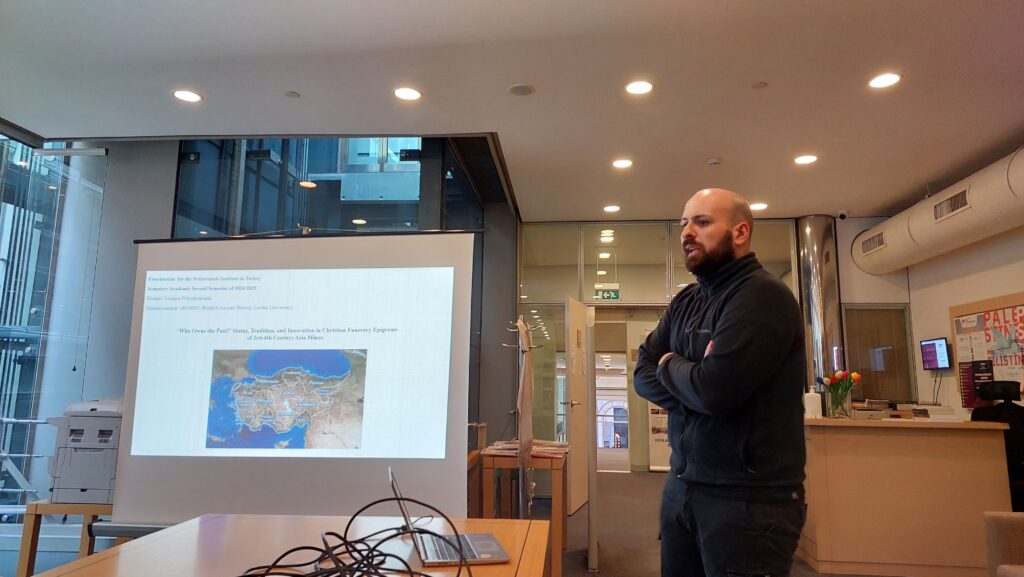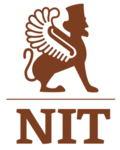by Giorgos Polychroniadis

From February 27 to March 27, 2025, I had the privilege of spending a month in Istanbul at the Netherlands Institute in Turkey (NIT) as part of a fellowship that was granted to me. This stay came at a crucial stage in my academic journey, as I am in the final phase of collecting sources and writing parts of my Research Master’s thesis in Ancient History at Leiden University. My research focuses on funerary inscriptions, specifically epigrams, poetic funerary texts written in Greek, across Asia Minor between the third and fourth centuries AD. This period is particularly significant as it allows us to trace the emergence of Christianity within these regions of the Roman Empire, shedding light on how Christians survived persecution, gained recognition, and ultimately saw their faith become the official religion of the empire. Funerary epigrams provide valuable insights into how elite figures, particularly bishops, negotiated their identities by blending elements of classical paideia, the Greco-Roman system of education, literature, and philosophy, with the new Christian doctrine.
My study aims to explore the similarities and differences in funerary epigrams from different regions of Asia Minor, focusing particularly on Phrygia and Lycaonia, which provide the majority of our sources. These regions seem to display distinct ethnic characteristics in their epigraphic traditions, setting them apart from areas like Caria, Bithynia, and Pontus. Key questions guiding my research include: How were Homeric and pagan literary traditions appropriated by Christian elites? What did it mean for these figures to present themselves as heirs to a literary tradition that merged Christian and pagan elements? How did beliefs about the afterlife evolve during this period, and what aspects remained unchanged?

As is often the case with inscriptions, the material is scattered across different museums, rarely found in situ, and frequently damaged, with some surviving only in drawings or old publications. Moreover, these texts are published in various languages and across numerous academic journals, making accessibility a challenge. However, my time at NIT proved highly productive. I was fortunate to discover recently published funerary epigrams relevant to my research, thanks to Turkish books and journals available at NIT and ANAMED’s library. Additionally, I familiarised myself with the work of Turkish scholars who have contributed to the field. While my Turkish reading skills remain rudimentary, I found these sources very important for my research. Beyond library work, interacting with fellow students and researchers, both from my field and others, was a unique experience. Such intellectual exchanges often lead to new ideas, research questions, and fresh perspectives, and my time at NIT was no exception.
When it comes to daily life in Istanbul, I can only say what many other fellows have already said: it is a privilege to have access to this city. Exploring its museums, religious and cultural sites, street markets, and, most importantly, its people has been an unforgettable experience. The NIT staff were incredibly helpful and always eager to provide guidance, whether it concerned daily life, contemporary issues, or historical discussions (not everything had to be about Ancient History!). In particular, I would like to express my gratitude to Dr. Fokke Gerritsen and Dr. Aysel Arslan for their support and hospitality throughout my stay. This research visit was highly rewarding, and I look forward to returning to Istanbul and Turkey in the future. This was just the first step in familiarising myself with the country, and hopefully many more visits will follow!
